Art
April 23, 2020
Tya Alisa Anthony, on creating new spaces for bodies of color
We paid a visit to the wonderfully kind Tya Alisa Anthony at RedLine Denver. Anthony’s studio is a treasure trove of personal family photographs and historical images. It is evident in Anthony’s work itself and in conversing with her why these materials are sites for examination and imagination.
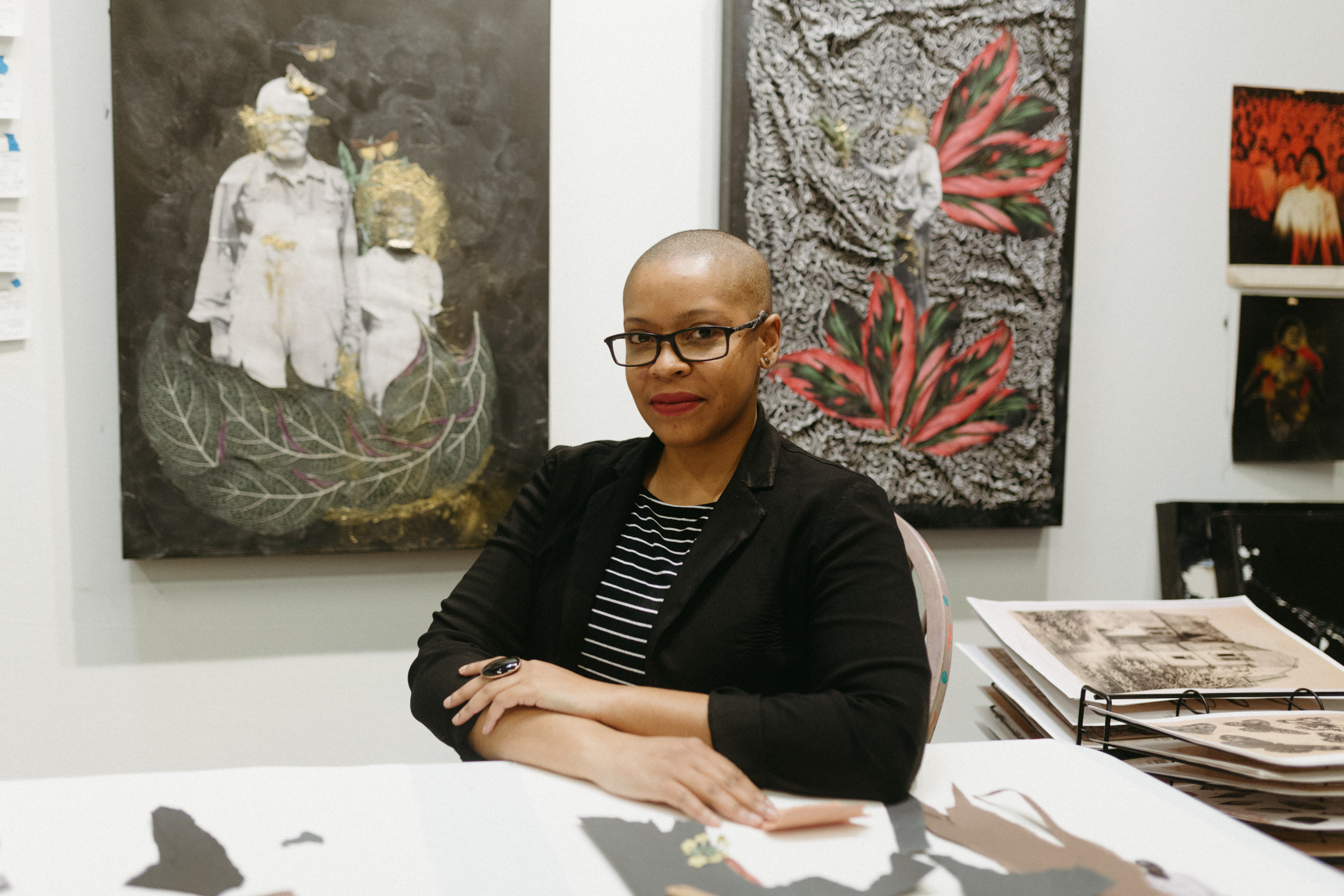
Anthony explores generational trauma and identity through narrative. We learned about her connection to and relationship with the figures she uses and the work she makes by pulling said figures out of their original contexts and placing them into a new scene. When we visited, she laid out an in-process work on a table, which included clippings of a subject surrounded by textiles and illustrations of botanicals. This gave us a glimpse into her process for the two bodies of work that she created for the Octopus Initiative, titled Share the Crop and Organic Tarot. Whether it’s an installation, photography, or collage on paper—such as those created for the Octopus Initiative—Anthony reimagines historical narratives of African-Americans and creates new spaces for bodies of color.
Anthony’s daughter, who assists her, was present when we visited. It seemed fitting that her daughter was in that day, as there is a theme of familial relationships and generational ties in Anthony’s work.
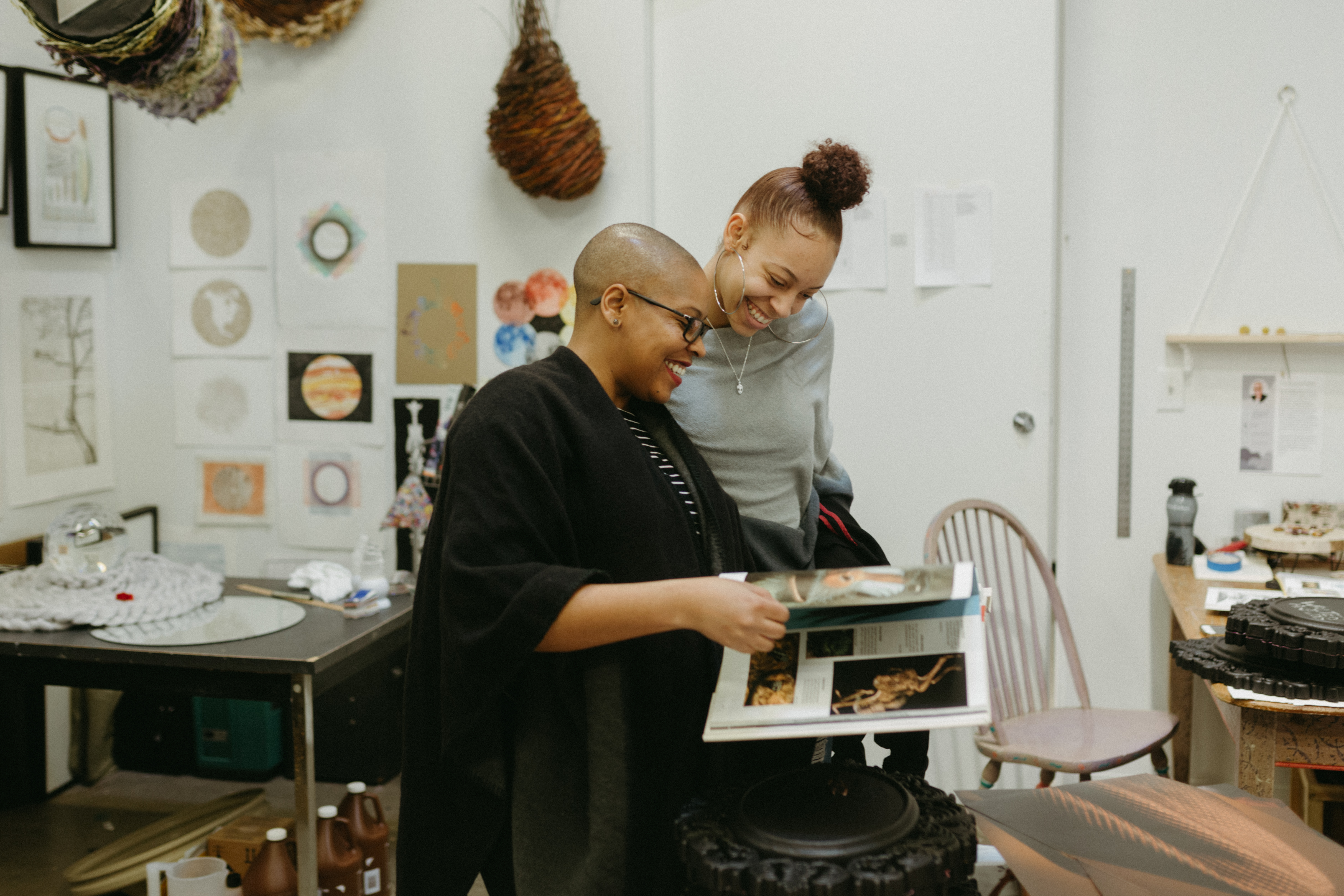
What first interested you in photography and how did collage become one of your primary mediums?
Photography has been a part of my life since I was 12 years old. My father was a hobbyist in the 1960s and he wanted to learn more about photography after graduating high school. Then he was in the military and wanted to become a military photojournalist. In his spare time—with us traveling around the world—it was second nature to have a camera in his hand, and at the time it was film.
So, photography has been in my life since I was a baby, but in my hands since I was 12. We were constantly moving and my father would give me his camera and say, “Go take pictures of your friends, we’re going to be moving soon and you’ll want to remember them.”
Throughout high school, I would photograph the theatre arts department during our rehearsals and performances. After high school, I didn’t touch a camera again until my early 20s, when my cousin, RaRah, inspired me to become a wedding photographer. Wedding turned into editorial, editorial turned into journalism and portraiture, portraiture turned into wanting more...wanting a personal connection. That’s when I moved here to Colorado.
During undergrad, I focused primarily on portrait photography, then I realized I needed to expand my mediums and I began working with collage. I wanted to explore my thoughts surrounding appropriation and utilize archives along with my photography or just archives in general.
Everyone has a camera on their phone, so I wanted to utilize older, archived materials that may never have seen the light of day because of the topic, content, or context of the work. It’s often the thing that is filed away or documented that inspires my work. Documentary style photography inspired me to bring these images to the light.
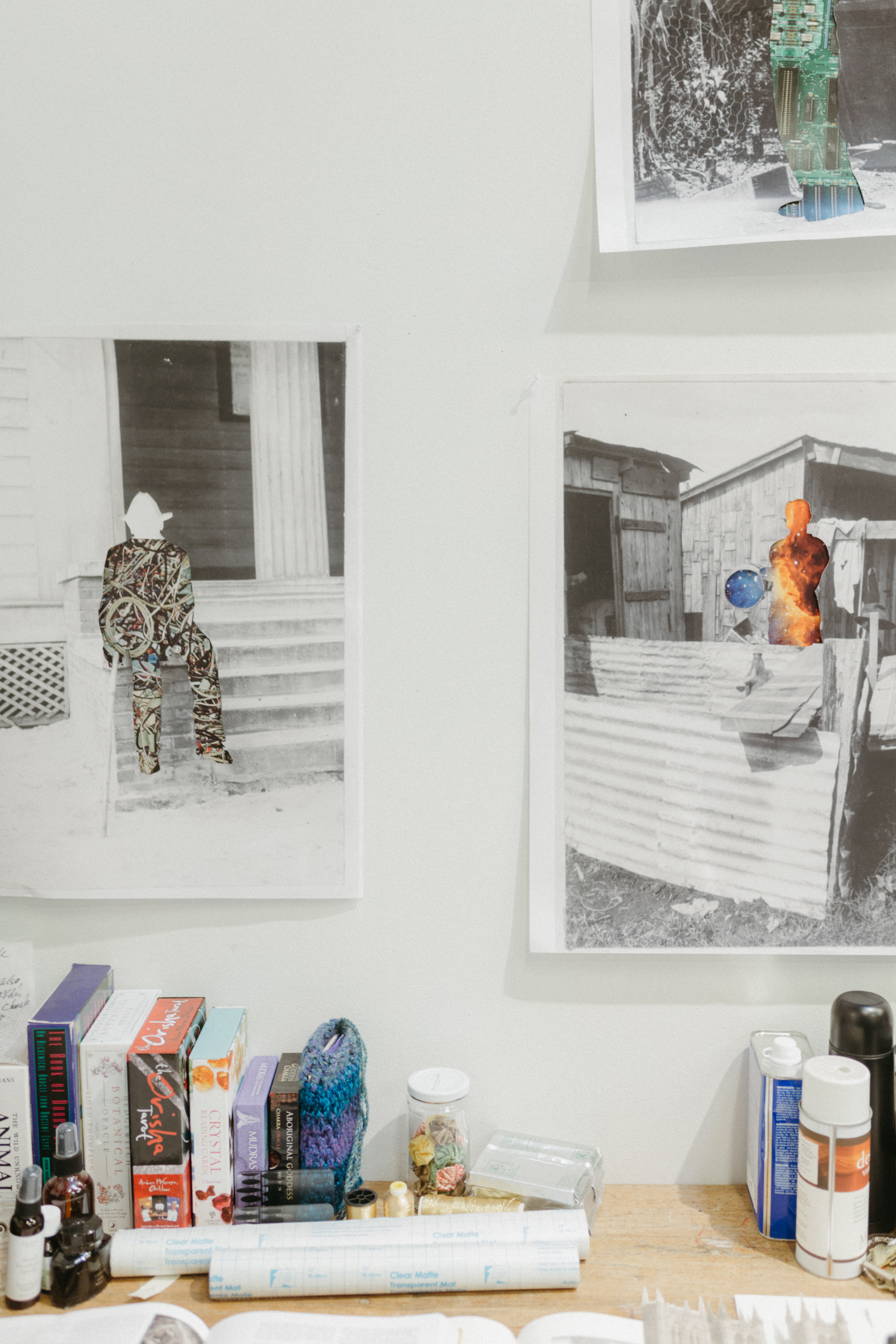
Since you work with archival materials, do you find yourself reimagining these scenes of the past? Or even reimagining representation in certain narratives?
Absolutely. I feel like it’s a reimagining of the identity of these subjects. They’re given one identity from a point of view that is based in transatlantic slavery, and although that is important, there is so much more to each individual. Even considering myself—connecting to the past and that history—it never will be removed from my history, my past, or my identity. So, I work to see it in a reimagined state where the subjects are exalted and given a mystical identity.
There’s an imposed history on these people. It’s imposed that my ancestors are from one side of history that is very delicate and traumatic in conversation. It’s tragic. So, my intention is to elevate their beings.
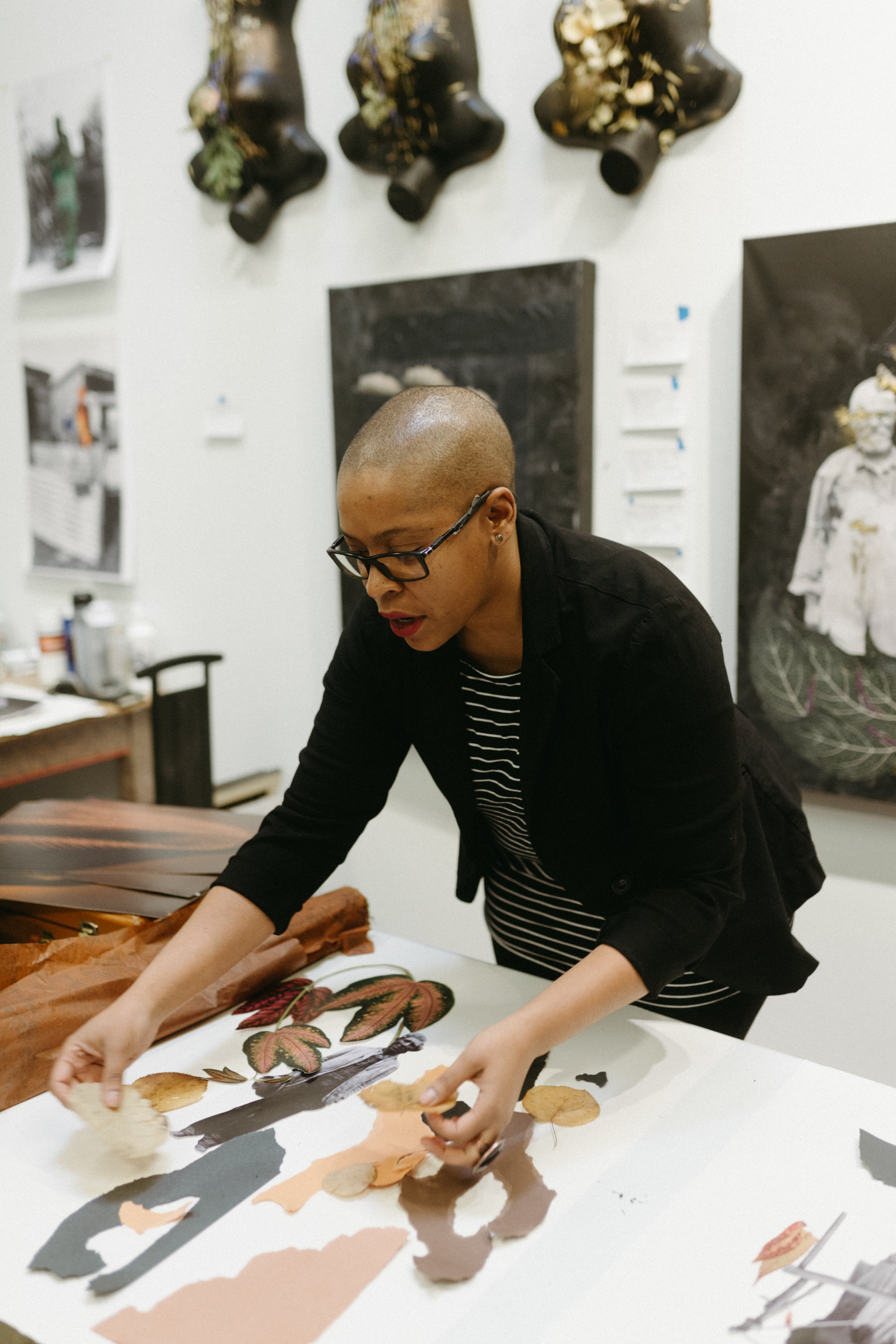
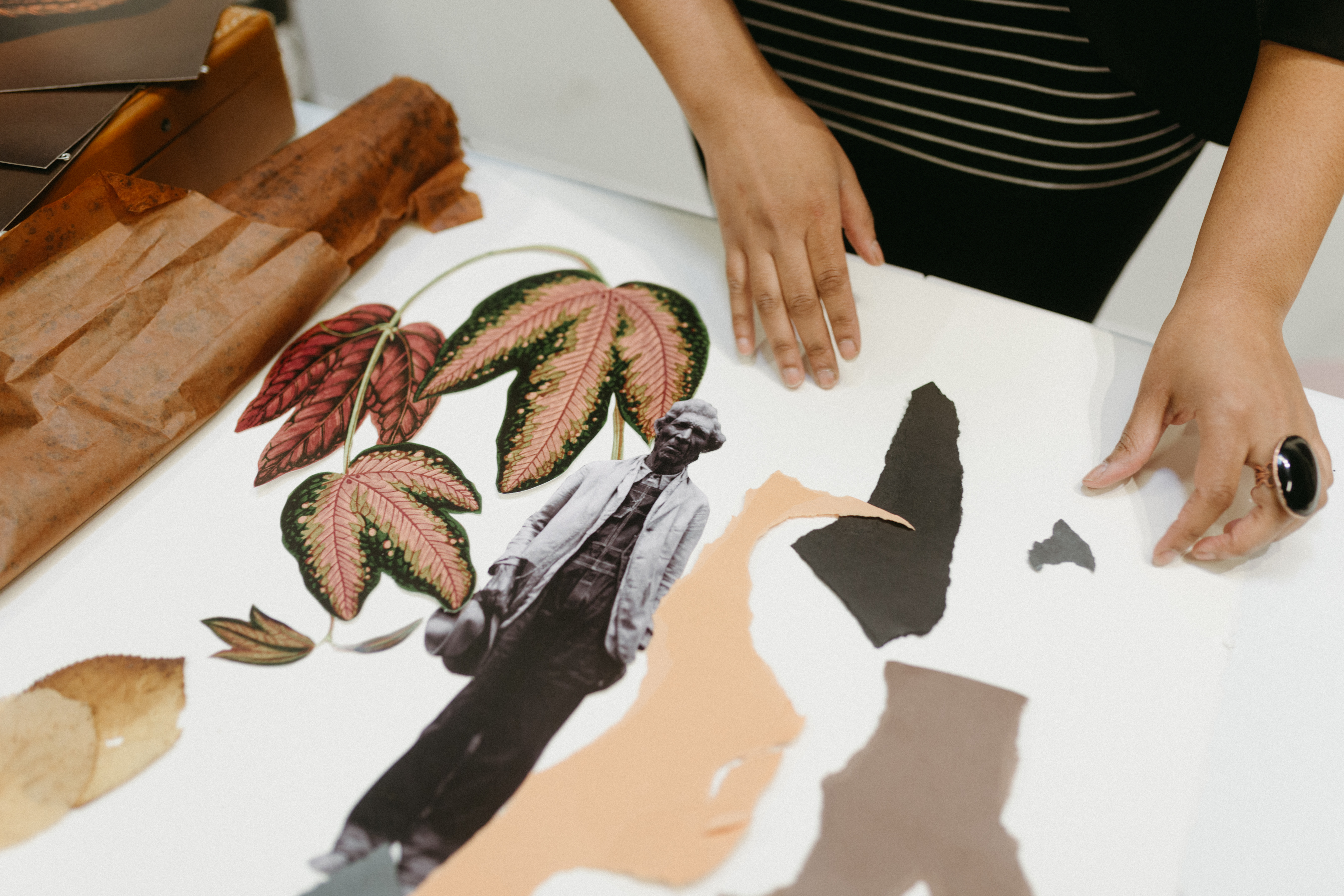
How do you go about selecting the subjects in your work?
I think they speak to me. They have a specific stare. You can create a narrative behind their stare, behind the action that they’re presenting. The woman with the wheel, for example, I want to know what she’s weaving. I’m also looking for a specific stance. I’m looking for confidence, for them to be grounded in their identity.
It’s less about where they are and where they’re placed—I want to know more about them.

You’ve said that you explore “ritual surrounding people of color”. Can you expand on this?
Oh absolutely, that’s where the meat is (laughs)! I’ve always been tentative to discuss or create works surrounding my spirituality or personal beliefs. Even the beliefs of my culture.
I really connect with natural environments. I was raised by my mother and her mother and aunts and uncles and it was ritual every summer to go to South Carolina and stay with our grandparents. Our grandparents would teach us their ritual habits, their connections to root work or occultism in broader terms. It’s very hush hush; it’s more of a private history. I’m from a family that were sharecroppers turned farmers and caretakers. They were called kitchen witches and herbalists. They were never formally taught these things, it was all natural and intuitive.
When I think about intuition, I turn to natural elements. I turn to herbal rituals and therapeutic plants, for example. My mother’s house is full of plants and they provide sustenance in a way that heals. As a personal practice I study tarot and herbalism as a means of natural healing. Ritual is a part of my everyday life, so why wouldn’t my art say that?
Before—with photography—I was speaking through other people’s stories. There was a disconnect for me, so I brought in ritual and symbolism. Some of it can be considered superstitious, and that’s where I reimagine things. I play with the idea of superstition and juxtapose it with reality to see where that line is and how I can mess with it by creating some humor and work that becomes its own charged object.
Some of it has become charged by energy or superstition or the narratives we place upon them.
So, with the other elements that come in with the subject…is it more of a formal/compositional exercise, or is it more playful/intuitive?
It depends on the body of work, the subject, and the series. For Share the Crop, I was intending to collaborate with technology and create a juxtaposition to see what conversation that created between the subject and the technology.
I would reimagine the subject through looking at antiquated illustrations, florals, botanicals...I’m very tactile. I want to see juxtaposition. Then I’ll explore how the patterns create the narrative. I want to know how pieces I find tie symbolic meaning into the work. For me, gathering foliage and other things is a way of connecting to what already exists. After that, I’ll work to subvert their existence.
I want to take these things that have a specific meaning and explore them in other contexts. I voice aloud, how can I change that context? It’s by removing something and placing it into another context.
It’s a lot more play than thinking about the composition. The composition comes with the body of work. So, for Share the Crop it’s the combinations of travel, time, and space. With Organic Tarot, it’s about how can I connect natural elements with people that were caretakers of land, and the idea of that being their entire existence?
I’m also trying to find connections between maternal and feminine materials to include into the mediums. It’s soothing when I find specific items that come together. It’s that narrative that I’m trying to explore as well.
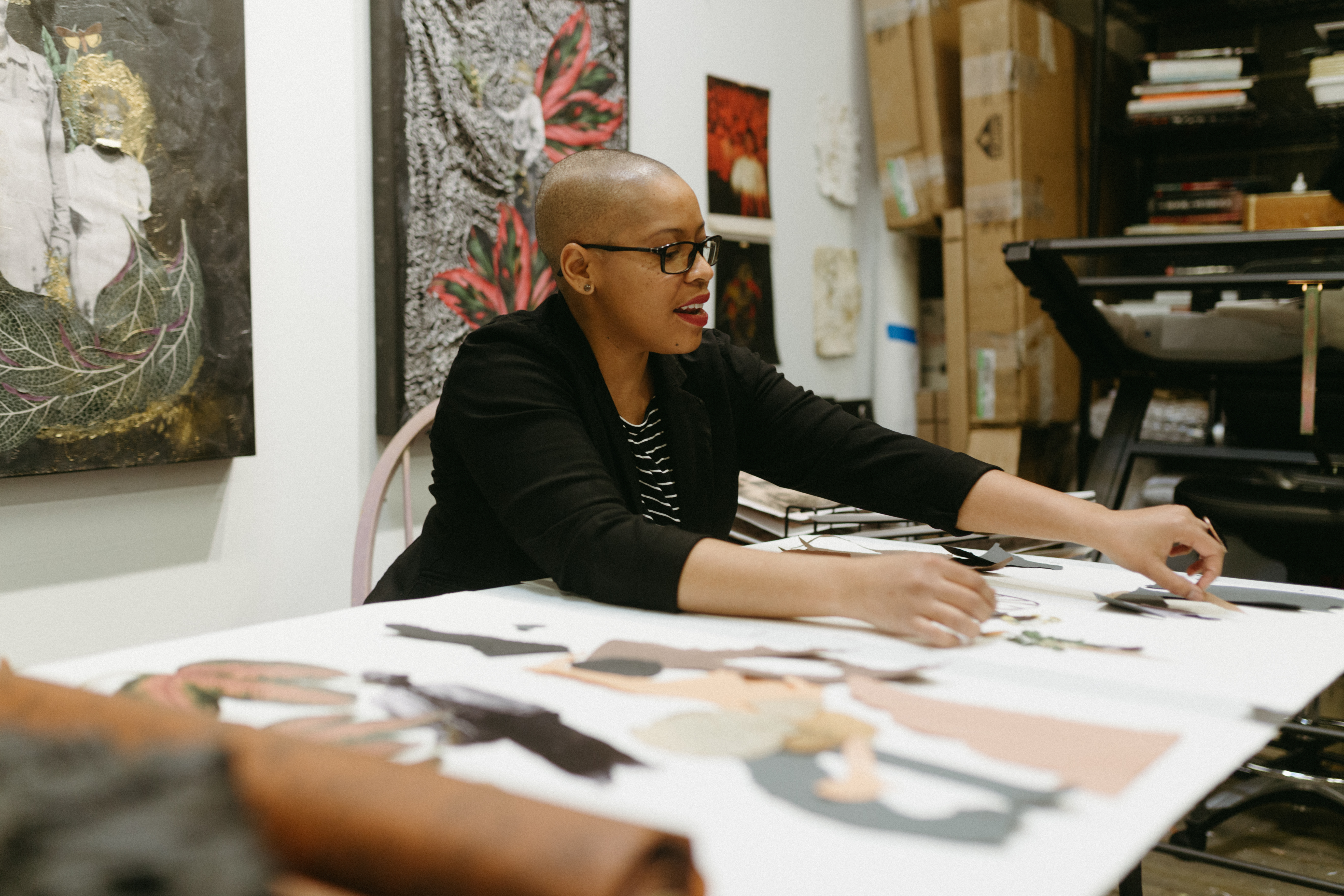
Does giving the subject that mystical identity you mentioned help inform when a work is near completion?
My purpose in these two bodies of work is reimagining bodies of color and embodying the different spectrums of the black experience. I think with Share the Crop, it was a matter of creating an environment for the subject. For Organic Tarot, it’s different. It’s much more involved. I’m manipulating so much more because I’m intending to create an image that you can exist in, that you want to continue to spiral around.
I want to allow the space for the subject to speak for itself and take the forefront. I kind of work with it until I can’t work with it anymore (laughs).
In my previous work, I used to overwork things, expecting a transformation or metamorphosis of the materials. Now, I’m working in a much more organic way. I feel much more connected to minimalism and allowing the subject to speak.
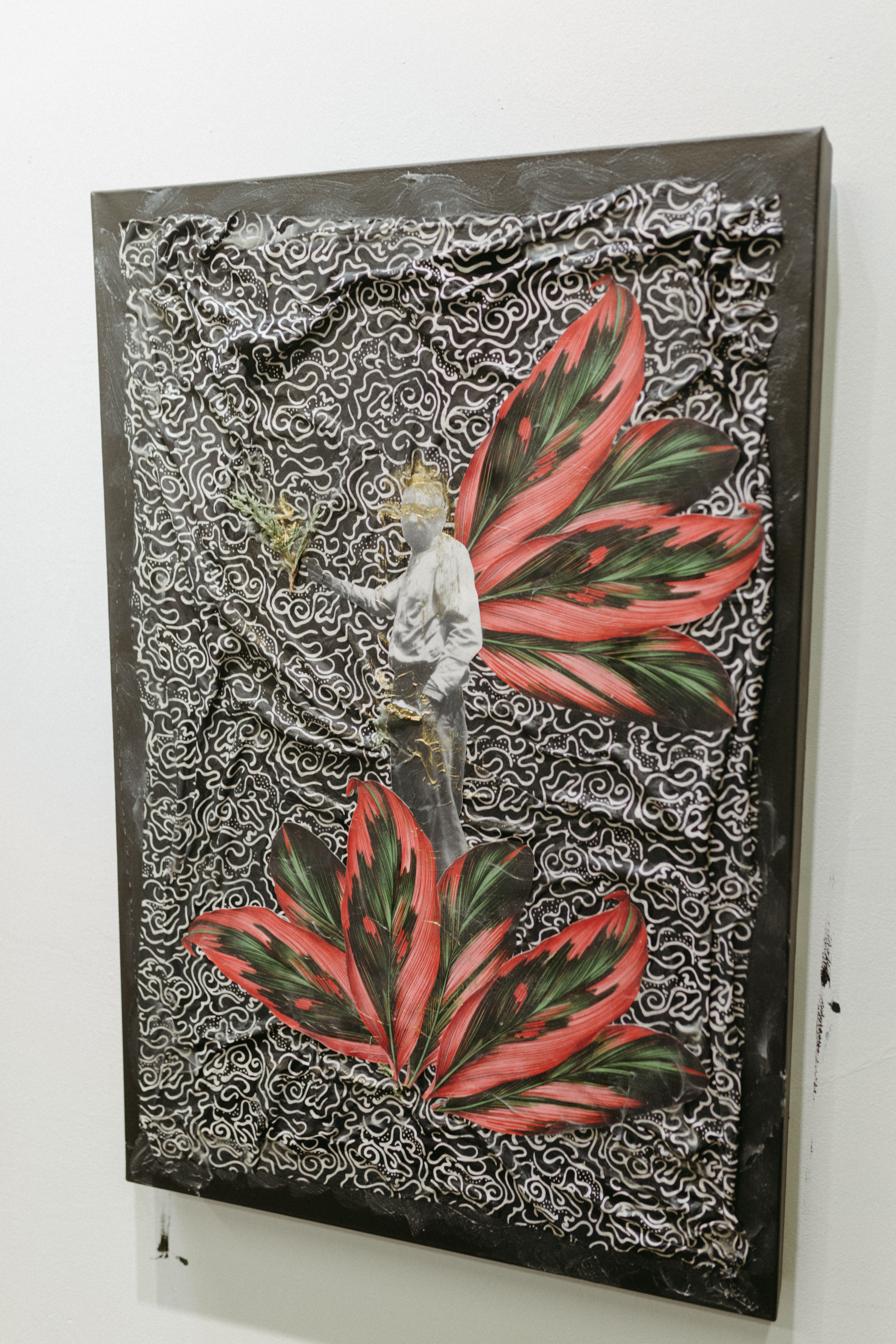
You explicitly work with certain narratives and ideas about bodies of color. Is it a critique...does it most always center on representation?
I think it absolutely is a critique in many forms. My work, Black Mirrors is a critique on the memorializing of those that are no longer with us. It also critiques the systemic disregard for bodies of color. And I would say other works are the same, they’re critiquing the representation of people of color. These works probably wouldn’t have ever seen the light of day in another context outside of the subjects being ex-slaves or sharecroppers. But they were people, and from them came more people. I’m asking, who were they outside of being a slave or a sharecropper? So I’m critiquing the archives and how they’re stored or forgotten. And I think a lot of my work is that: it’s about the forgotten.
That was the one thing I was missing in my previous work. I kept fighting the question, why do I have to make black work? Because I am black it’s obviously going to be black work. So it became—not an obligation—but something I was drawn to to pay respect and to honor the existence of. And that too is what my work is really focused around, is honoring the existence of these people of color who were misrepresented.
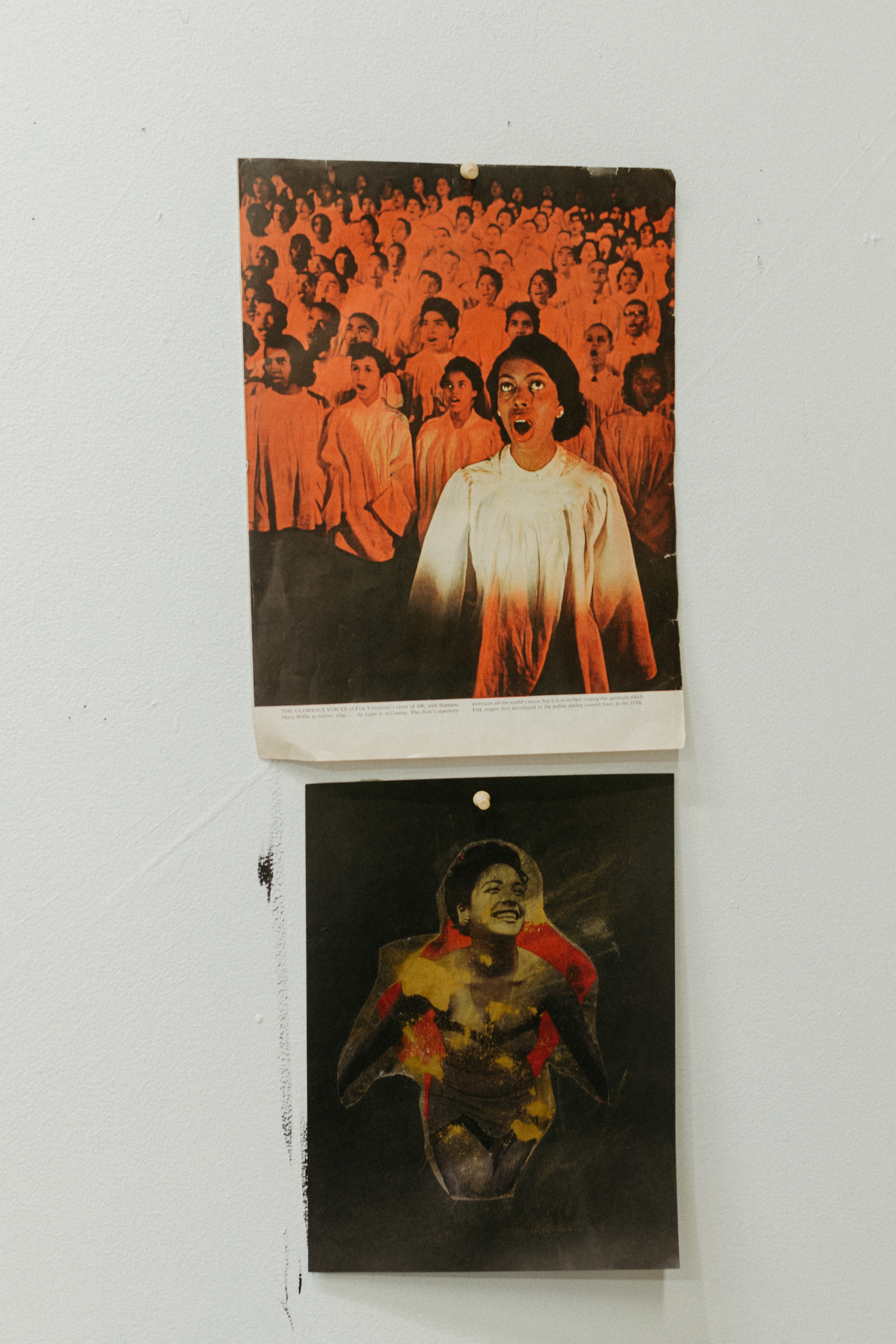
What is it like for you to be a black female artist in this day and age?
It’s sometimes overwhelming because of the imposed ideas of what my work could or should be. I am really thinking about how I can move the conversation forward in works that are created by people of color, as a woman of color that is now 40. I’m thinking about the responsibilities I have to be present for my legacies, my children. What work will they do?
It's a responsibility—but in a good way—to be one of a handful of African-American artists in Denver that is working in this way. It’s uncomfortable—it’s all of these things. But I think it fuels the work. Instead of deterring me from creating works that are inspired by people of color, it inspires me to place myself in the work. I’m in a position where it excites me to be uncomfortable and make others uncomfortable by creating critical thought surrounding our blended culture. I don’t want to throw the work in people’s faces, but I want to allow conversation and discourse and have more representation in gallery spaces.
l feel like my voice is actually being heard, and I think it’s an opportune time to allow the stressful and uncomfortable moments to create spaces for others who feel the same.
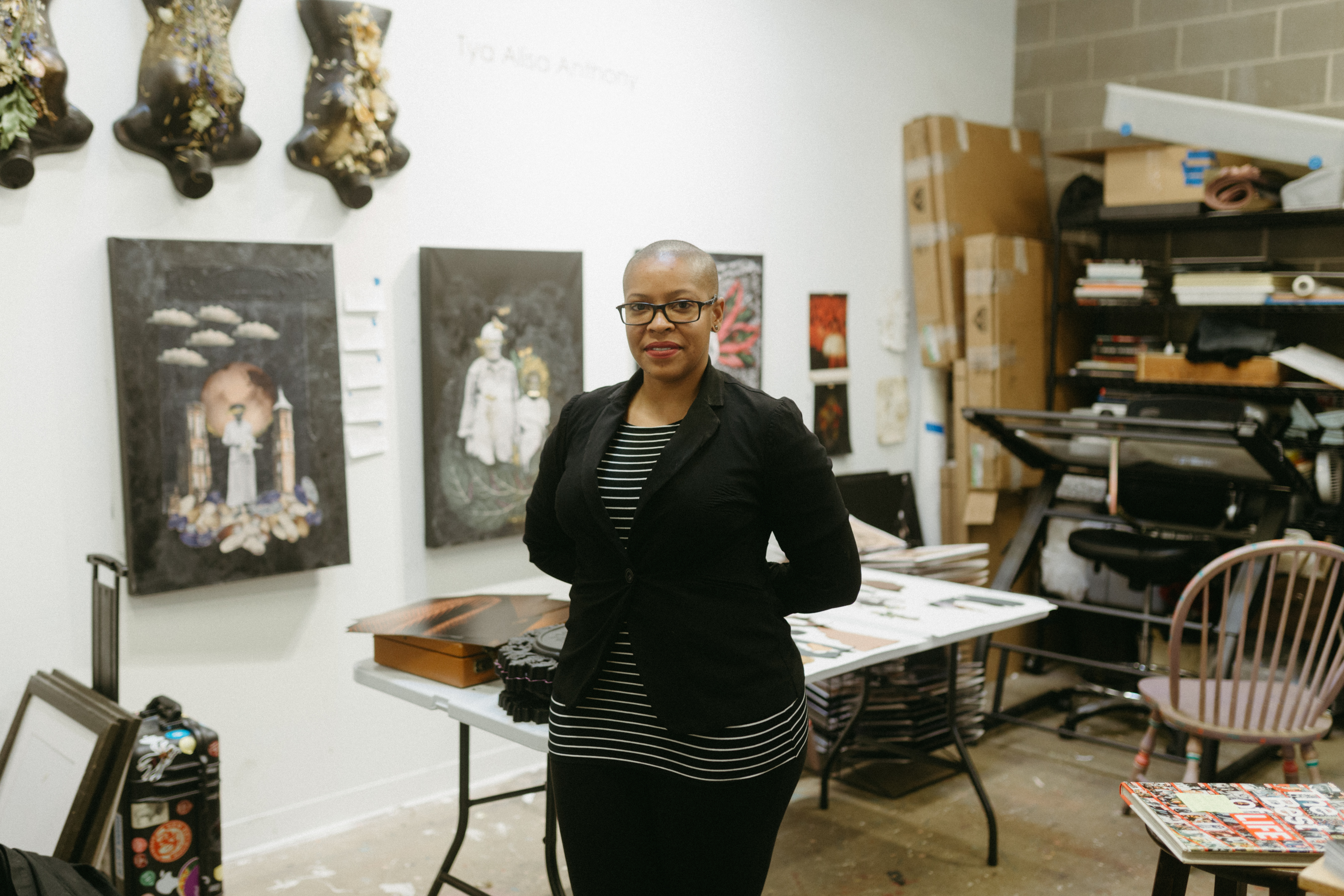
There’s so much power in that. Was Share the Crop and Organic Tarot created exclusively for the Octopus Initiative, or does the series continue outside of the works you created for the Octopus Initiative?
Share the Crop and Organic Tarot—which is a series inspired by Share the Crop—was exclusively created for the Octopus Initiative.
I had just moved into Tank Studios when I was approached about the Octopus Initiative. I had not had a studio before, and I didn’t have RedLine at the time. My studio was in my home, if you can imagine (laughs). My dining room is the smallest of dining rooms, and then I moved into two studios (laughs). It allowed space for this explosion of creativity and ideas that I had previously shoved under the rug thinking, “one day I’ll have the opportunity to do something like this.”
It was amazing to have other people to look at my work. I’m kind of an introvert, I tend to make the work and then I hide (laughs). So to have MCA come and speak about the work and show interest in what I was creating at the time was amazing, it felt so freeing.
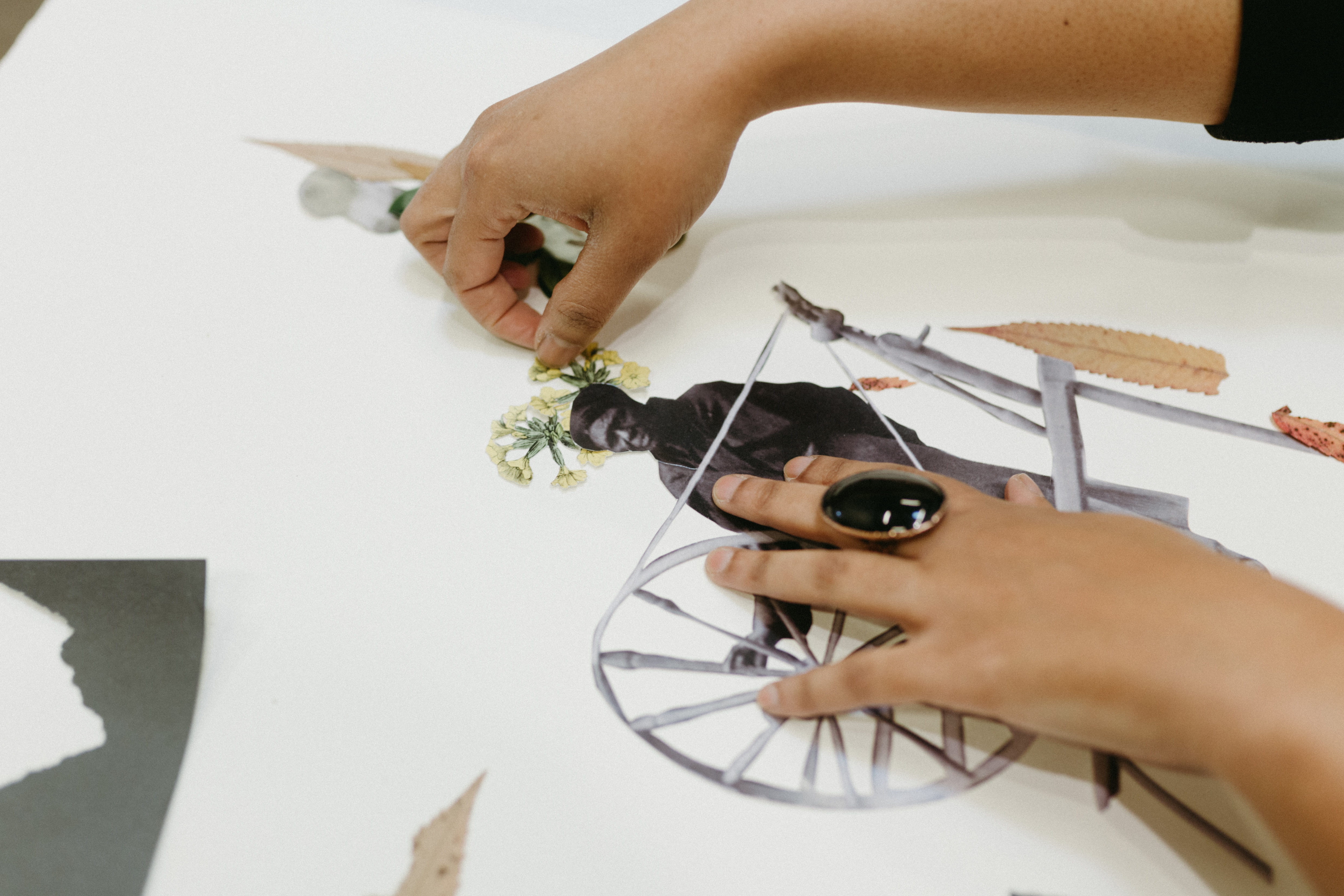
Check out Anthony’s work in the Octopus Initiative, and be sure to keep your eyes peeled for her available works in the monthly lottery!